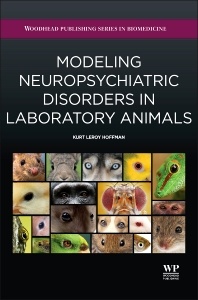Modeling Neuropsychiatric Disorders in Laboratory Animals
Auteur : Hoffman Kurt Leroy

Modeling Neuropsychiatric Disorders in Laboratory Animals serves as a guide for students and basic investigators in the fields of behavioral sciences, psychology, neuroscience, psychiatry, and other professionals interested in the use of animal models in preclinical research related to human neuropsychiatric disorders.
The text focuses on the rationale and theory of using animal behavior, both pathological and normal, as a tool for understanding the neural underpinnings of neuropsychiatric disorders. Chapters contain discussions on both classical and modern views on the validation of animal models for neuropsychiatric disorders, also discussing the utility of endophenotypes in modeling neuropsychiatric disease.
Subsequent chapters deal with four specific classes of disorders, including anxiety disorders, depressive disorders, obsessive-compulsive and related disorders. Final sections discuss the future for the development, validation, and use of animal models in basic and preclinical research.
- Chapter 1: What is an animal model, and how is it validated?
- Chapter 2: Depressive Disorders
- Chapter 3: Anxiety Disorders
- Chapter 4: Obsessive-compulsive and related disorders
- Chapter 5: Synthesis and Future Directions
- Focuses on the rationale and theory of using animal behavior, both pathological and normal, as a tool for understanding the neural underpinnings of neuropsychiatric disorders
- Serves as a guide for students and basic investigators in the fields of behavioral sciences, psychology, neuroscience, psychiatry, and other professionals
- Discusses specific classes of disorders, including anxiety disorders, depressive disorders, obsessive-compulsive and related disorders
Date de parution : 09-2015
Ouvrage de 324 p.
15x22.8 cm
Thème de Modeling Neuropsychiatric Disorders in Laboratory Animals :
Mots-clés :
Biomedicine; Neuropsychiatry; Animal Science; Neuropsychiatric disorders; Animal models



